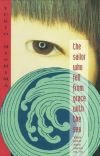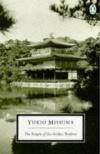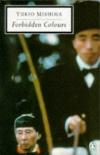
Yukio Mishima’s The Sailor Who Fell From Grace With the Sea explores the vicious nature of youth that is sometimes mistaken for innocence. Thirteen-year-old Noboru is a member of a gang of highly philosophical teenage boys who reject the tenets of the adult world — to them, adult life is illusory, hypocritical, and …

Because of the boyhood trauma of seeing his mother make love to another man in the presence of his dying father, Mizoguchi becomes a hopeless stutterer. Taunted by his schoolmates, he feels utterly alone until he becomes an acolyte at a famous temple in Kyoto. He quickly becomes obsessed with the beauty of the temple. …

仮面の告白, kamen no kokuhaku on Yukio Mishiman ensimmäinen kirja, joka julkaistiin vuonna 1949. Siitä julkaistiin katkelma Kai Niemisen kääntämänä vuonna 1983 Veikko Polameren toimittamassa japanilaisten kertomusten kokoelmassa Shōsetsu: japanilaisia kertojia.

Forbidden Colors is a 1951 novel by the Japanese writer Yukio Mishima, translated into English in 1968. The name kinjiki is a euphemism for homosexuality. The kanji 禁 means "forbidden" and 色 in this case means "erotic love", although it can also mean "color". The word "kinjiki" also means colors which were forbidden …

 English
English Español
Español Deutsch
Deutsch




